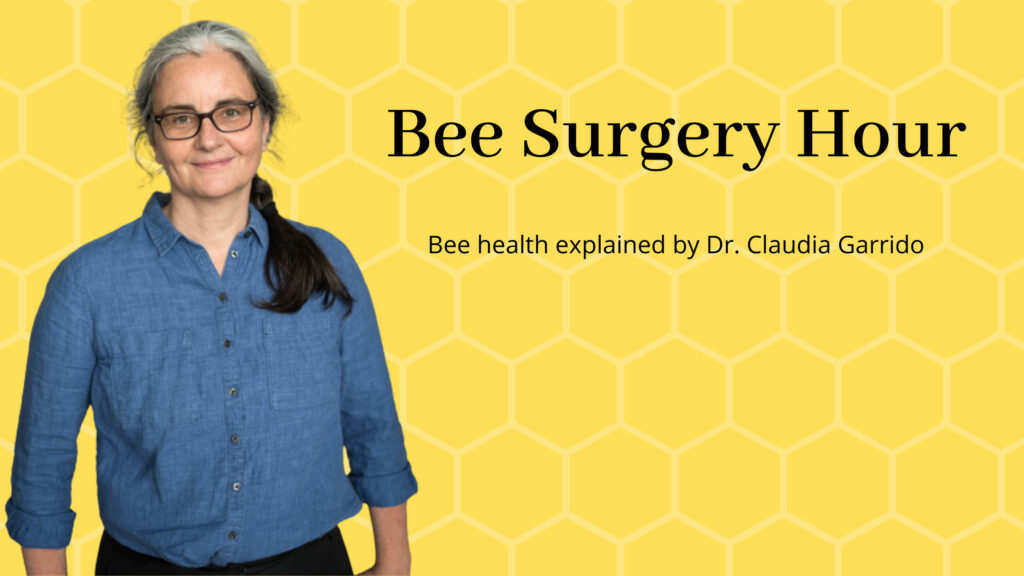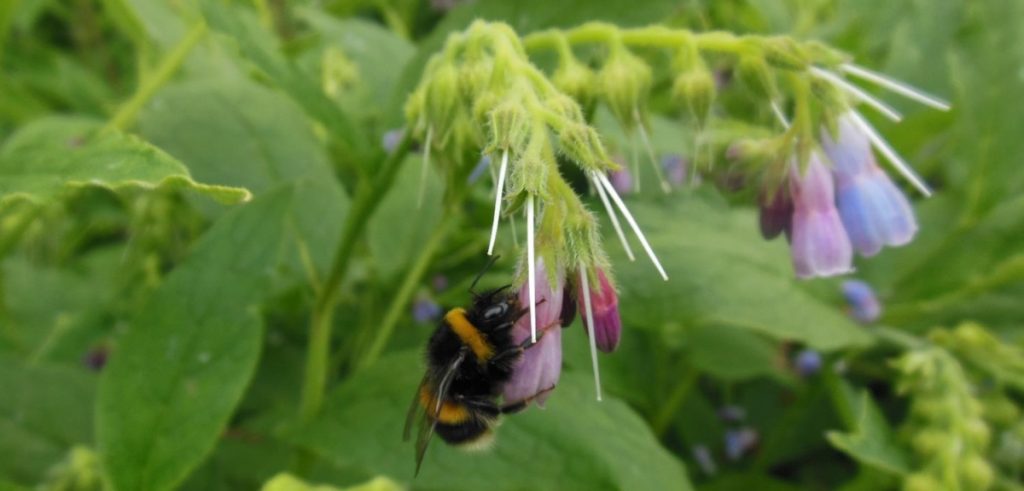Bee health and product quality are closely linked. Especially, since varroa needs regular treatments. Managed honey bees are a food producing species, so treatments mustn’t affect the honey or other hive products for human consumption. This includes also wax. First, because it may be used for cosmetics. But the main reason is that small wax particles can enter the honey and create residues.
Residues – an issue for product quality
Honey is the main hive product, and even beekeepers specialized in pollination services may harvest and sell some of it. Residues can influence product quality in two ways:
- By influencing taste and smell of the honey.
- By residues of substances that can be harmful for human health.
These issues apply differently on synthetic varroacides or those from natural origin. Within the latter, we also have to make a few distinctions.
Characteristic taste and smell of honey
Honey is a very variable product. There are multifloral honeys that catch the unique flavours of a region. I’m not a honey expert, but this makes me think of a scene during a vacation. I was still a child and we were making a small road trip in the evening after a long day at the beach.
We stopped at a beautiful place, a meadow with old trees on it. I remember the fading light, the intense smell of dry grass and flowers. An old beekeeper was returning home, started a conversation. He and my father made a connection and we got a large jar of dark honey. Which tasted like that meadow smelled.
That was a multifloral honey, nowadays I know that surely there was quite a bit of honey dew. This created that dark colour and the depth and slight bitterness of its taste. It was the smell and taste of that landscape.
On the other hand, we have monofloral honeys. Those have characteristics typical of the plants they come from. Acacia honey is different from sunflower or chestnut honey. Or all the other types produced all over the world. Tropical lychee being one of my favourites.
How varroa treatments can change the sensorial character of a honey
The typical smell and taste of honey is an essential part of product quality. If something changes these traits, this lowers the quality. We have this issue mainly with substances from natural origin. The two organic acids, oxalic acid and formic acid, are water soluble. Therefore, if treatments are done during honey flow, these substances can enter directly into the honey. This is true mainly for formic acid, which is very volatile.
In the Netherlands, a group of researchers studied the formic acid and thymol residues in honey if the supers were put on the colonies immediately after the end of the treatment. They found significantly more of both substances in the honey in comparison to colonies that weren’t treated before. For formic acid, the levels rose up to 71,8-205,3 mg/kg, for thymol up to 0,3-0,6 mg/kg.
This has two components:
- The thymol residues are much lower because this is a fat-soluble substance. Hence, it accumulates first in the wax and then, secondarily, may enter the honey.
- The thresholds for tasting these substances are different, too. Formic acid can be perceived in honey at concentrations between 150-600 mg/kg by experienced honey sommeliers. Thymol is noticed already at 1,1-1,6 mg/kg in nectar honeys and above 2 mg/kg in honey dew honeys. It depends on the honey type, as you can see.
In the Dutch study, this taste threshold was partly passed by formic acid treatments, but not by thymol treatments. This is because the slower entering of thymol into the honey – see above.
Both the organic acids as well as thymol are natural components of honey, but obviously “too much” would alter product quality. It’s the alterations that honey sommeliers detect above the thresholds. Oxalic acid is less of an issue, as it’s not volatile as the other two substances and eliminated very quickly from the colony. But also for the other two substances, the residues fade over time.
How to avoid the alteration of product quality
So, if we want to avoid altering product quality, there are two essential recommendations:
- Stick to the indications on the label, especially concerning dose and frequency of the treatment. This limits the exposure of the product to the absolutely necessary.
- Never treat with the honey supers on. Here in Germany, we recommend to treat only after the last honey harvest. Then, until the next flow, there will be enough time to not altering the taste and smell of the honey. If you treat in between two honey flows, point 1 is even more important.
One last thing that may be important to some of you: the residues decline over time, and so does the potential effect on product quality. This decline is especially fast if the bees are on the combs, but also a well-ventilated comb storage helps.
Health implications for bees and humans
Residues get a bad rap mainly because of the health consequences for the bees and the consumers. Here, we have to differentiate between substances of natural origin and synthetic varroacides. The former are recognized by FAO (World Food Organization) as generally safe for consumption. You would have to eat so much of these to cause harm that it would be absolutely disgusting. Remember: the dose makes the poison. Also for the bees, the harmful effects are neglectable – provided that they were used correctly.
This is different for synthetic acaricides. These are potentially harming to human health. But also in this case: The dose makes the poison. To avoid these issues, there are “Maximum Residue Levels” (MRLs) for these substances. They may be at different levels depending on the region of the world you live in, so I won’t give any values to avoid confusion. But note that during the registration process of a varroacide, consumer safety is evaluated carefully. Does the proposed application mode and dose produce residues higher than the MRL? Then, a registration will be denied.
The same is true if the side effects on the bees outweigh the benefits the colonies get from the treatment. Again, this will only be the case if you use the product according to the label. Any modification can change this and harm your bees. This is the reason why I insist so much in varroa treatments being veterinary medicine. And this is also an argument to use only registered products: All these evaluations are done only if the products go through the registration process.
The three Rs of varroa treatments
My original plan was to talk about the three Rs of varroa treatments (residues, resistance, and reinfestation) in this post. But I wanted to explain residues and the issues around them in more detail, so this is already quite long. The other two Rs, therefore, will follow next week. This may be useful also because the other two aspects don’t affect product quality as much as residues do… You already have enough to chew on for this week.
This post is part of my varroa series I’m doing this December as a companion to my BeeAdvent posts on LinkedIn and Instagram. If you want to check that out: I’m @Dr Claudia Garrido on LinkedIn and @beesafe01113 on Instagram. There every day I share a little piece of varroa knowledge – from the 1st to 24th December 2023.



